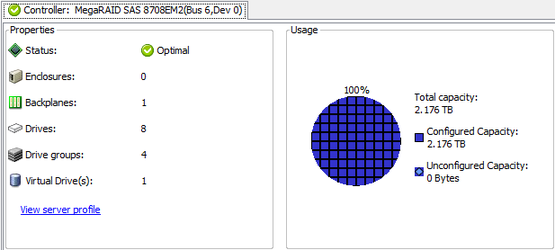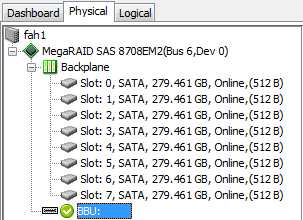- Joined
- Dec 10, 2011
- Location
- Cádiz (Spain)
Overkill just got real.
Welcome to Overclockers Forums! Join us to reply in threads, receive reduced ads, and to customize your site experience!




You have low self esteem? I can't really help with that.

aww give it a hug.
[root@ruby ~]# zpool create -f zfstest raidz sdc sdh sdd raidz sdf sdi sde
[root@ruby ~]# zpool status
pool: zfstest
state: ONLINE
scan: none requested
config:
NAME STATE READ WRITE CKSUM
zfstest ONLINE 0 0 0
raidz1-0 ONLINE 0 0 0
sdc ONLINE 0 0 0
sdh ONLINE 0 0 0
sdd ONLINE 0 0 0
raidz1-1 ONLINE 0 0 0
sdf ONLINE 0 0 0
sdi ONLINE 0 0 0
sde ONLINE 0 0 0
errors: No known data errors
[root@ruby ~]# zpool list
NAME SIZE ALLOC FREE CAP DEDUP HEALTH ALTROOT
zfstest 5.44T 202K 5.44T 0% 1.00x ONLINE -so really what do you use the servers for?
I've answered it multiple times in the thread. The file server is a file server. The others are virtual machine hosts, which run a variety of VMs: databases, camera monitoring, web servers, full Windows networks, etc. When I find something that is interesting, I test it out in a VM and keep it if proves useful.can I get a legit answer please?
I still need to do resilver tests and make sure this M1015 works with the SAS expanders.
I know how to do read/write tests, thank you though.I used the above to test my zpools when I was using zfs.
Hey, just making sure everything works!I think if you find anything that doesn't work well with a M1015 you'd be the first!